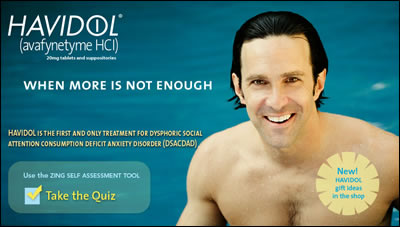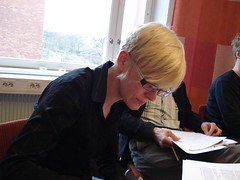Fact is, when installed correctly, spam filters work for most mail programs. My own experience is that it works for 49 out of 50 mails, so I may have missed recent developments in pharma spam mail design –like this one that arrived in my inbox a few minutes ago:

Spam mail used to be pure text, but now they have apparently begun to add pics. In this case a young blonde woman with a blue stethoscopish streak around her neck that classifies her as an authoritative intern rather than a simple pleasure model. Even biomedicine on illicit commercial display makes progress!
PS: how do they get beyond my filter? Seems to be an example of what Geektronica calls “clever pharma-spam“


